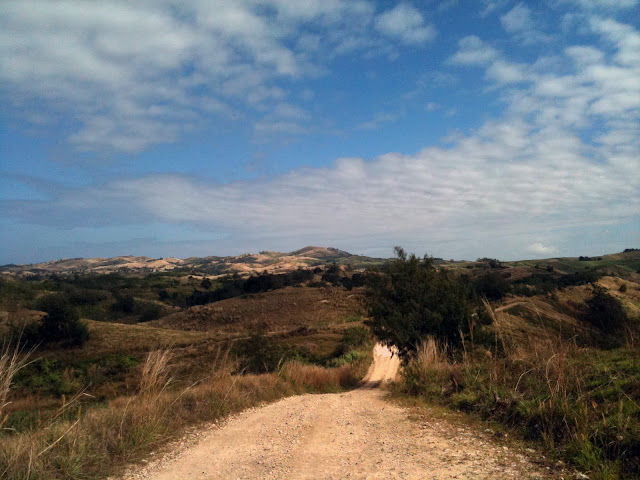 |
| A small pond in Suva, Fiji which has the red-orange hue from the oxisol soil's color. |
 |
| Sugar cane fields in Fiji with one recently burned to prepare for the next. |
Viti Levu, the main island of Fiji, is big enough to have different climates on either side of the island. Wind carries storms from West to East. With the mountains residing in the middle of the island water is evaporating off of the ocean and the wind is moving to the West. The water condenses and is then dropped over the East part of the island which has the agriculture. Unfortunately, the water is almost always dropped on the East side of the mountains before it reaches the West. This causes the West part of the island, with cities like Nadi, to be very dry.
 |
| West side of Viti Levu showing the difference in climate. |
 |
| The water cycle which causes the precipitation patterns on the island. The west of the island would be to the left of the mountains with most of the precipitation falling before it reaches that part of the island.
Sources:
Water cycle: http://www.metoffice.gov.uk/research/areas/understanding-climate/water-cycle?media=3373
West side:http://parramattayankee.blogspot.com/
Cane fields: http://www.galenfrysinger.com/sugar_cane.htm
Water: Personal
|